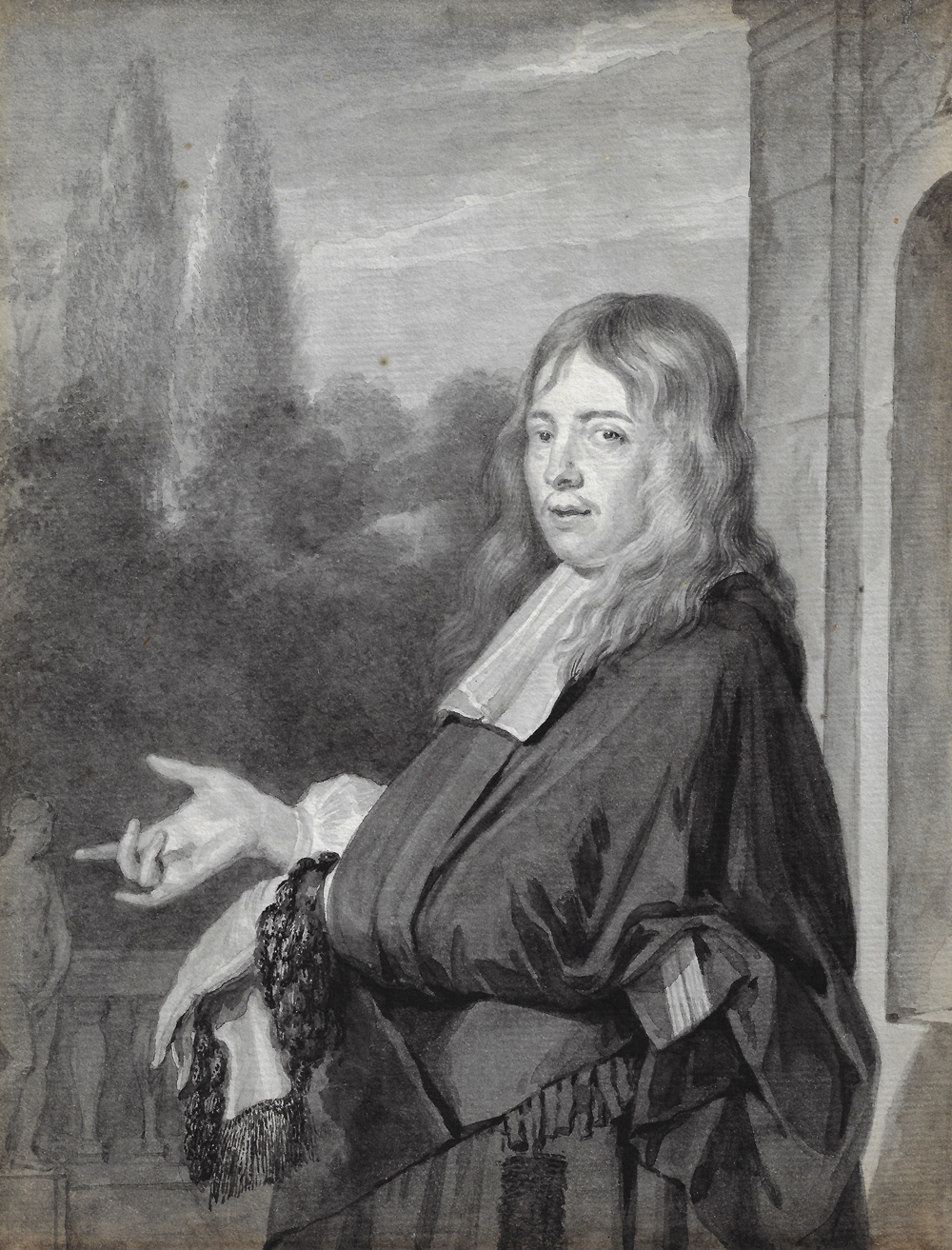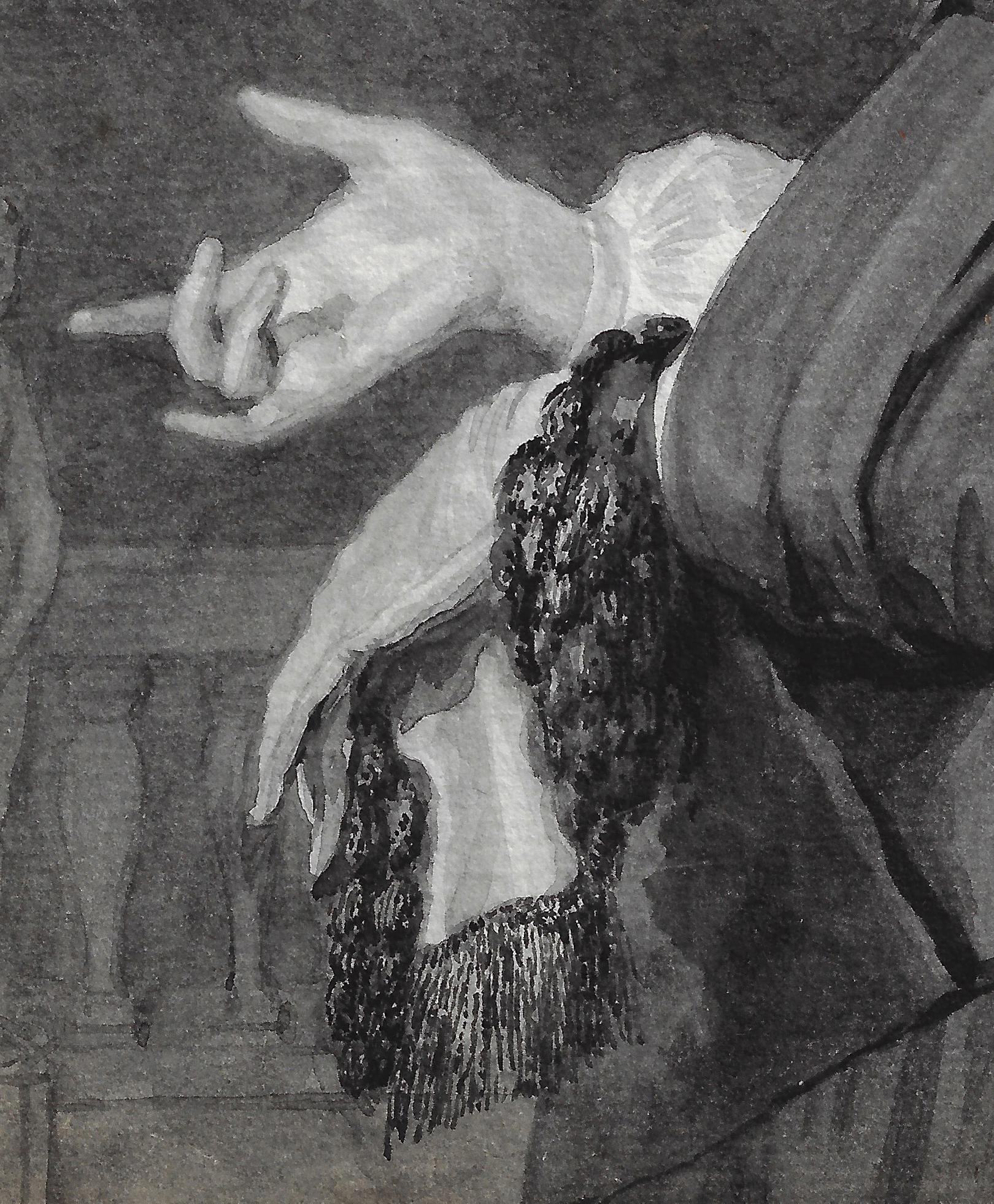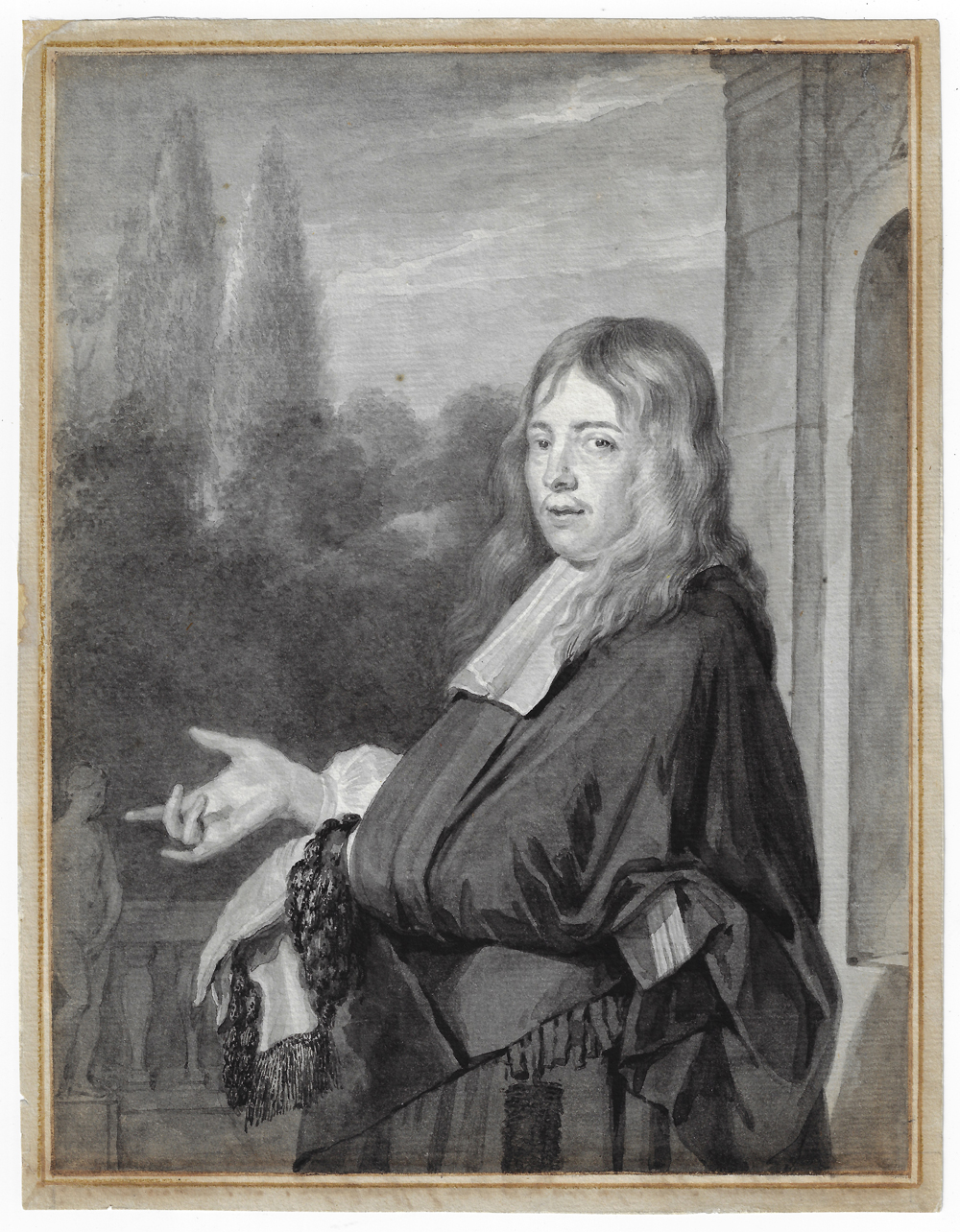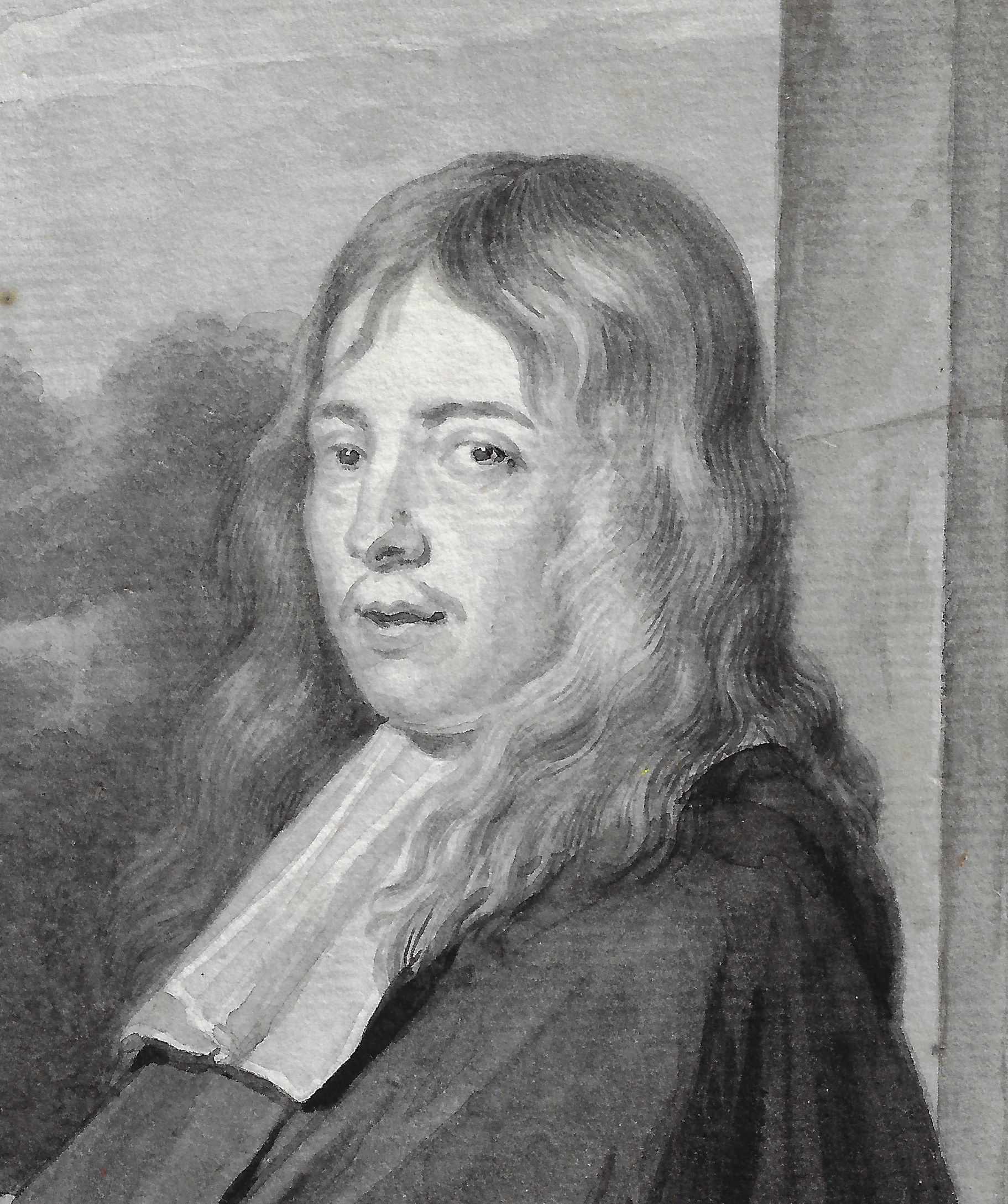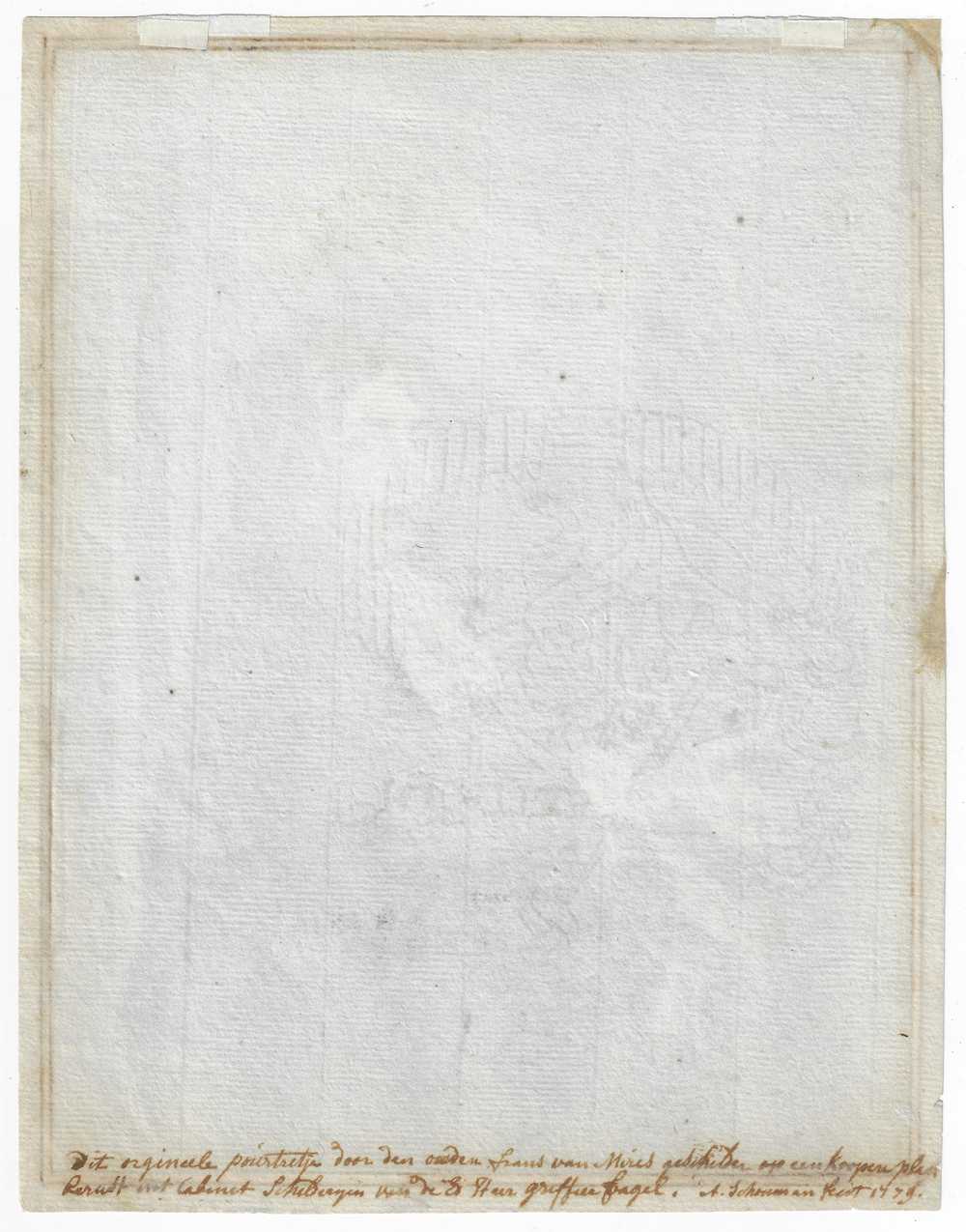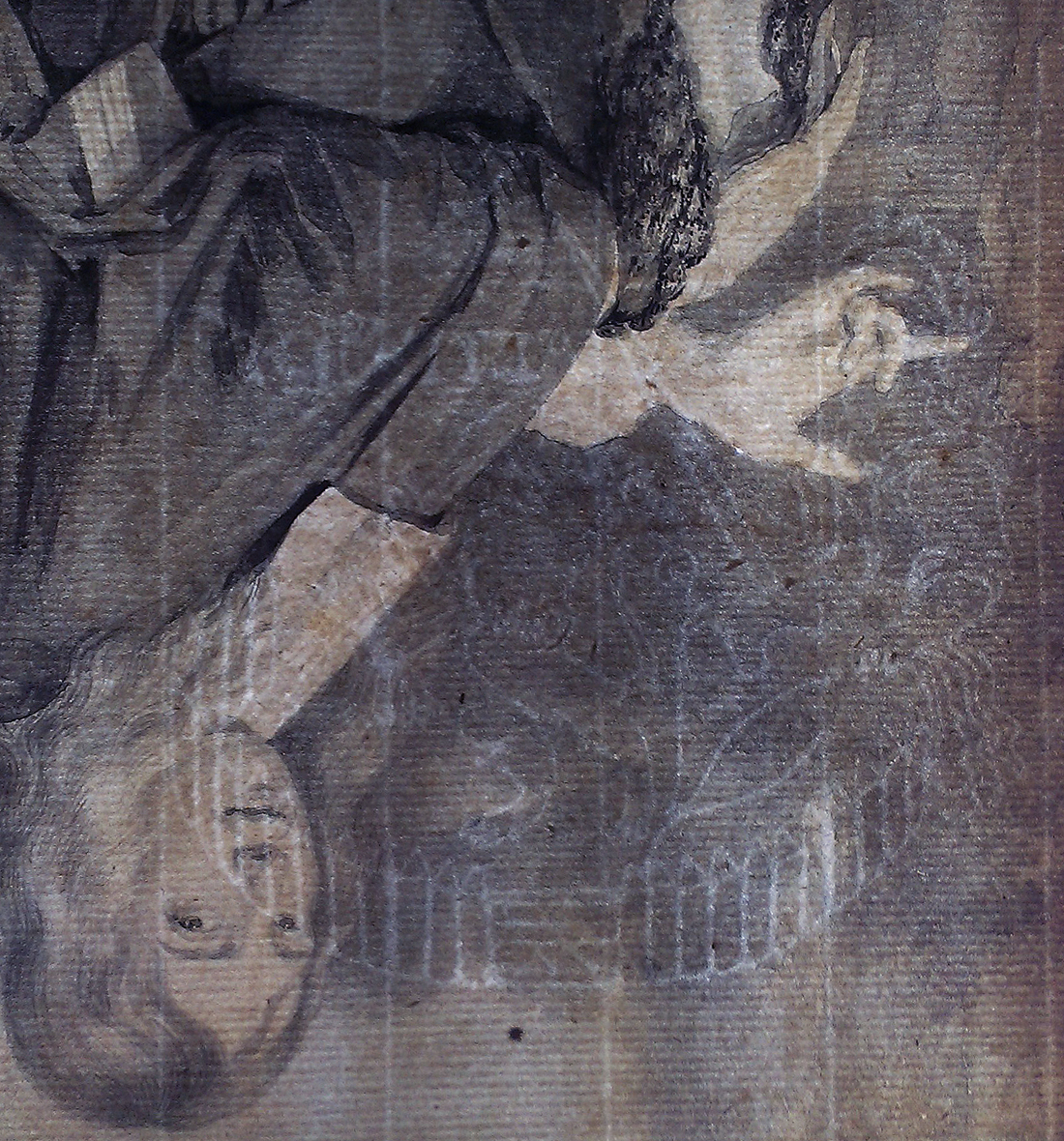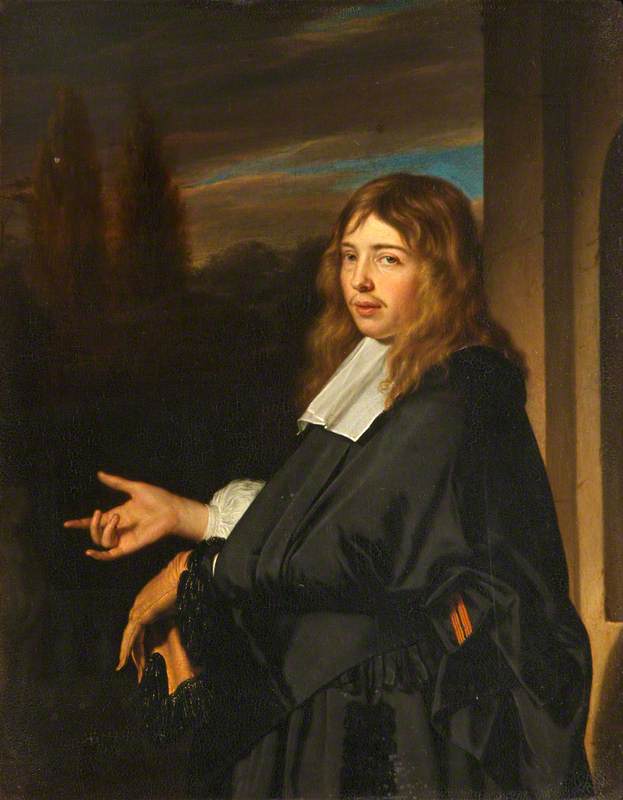AERT SCHOUMAN (Dordrecht 1710 – 1792 The Hague) after FRANS VAN MIERIS I (Leiden 1635 – 1681 Leiden)
Aert Schouman (Dordrecht 1710 – 1792 The Hague) after Frans van Mieris I (Leiden 1635 – 1681 Leiden)
Portrait of a Gentleman Holding a Glove
Grey wash, double brown ink framing lines, watermark Pro Patria, 217 x 168 mm (8.5 x 6.6 inch) (sheet); 200 x 152 mm (7.9 x 6 inch) (painted area)
Signed, dated and annotated ‘dit orgineele poúrtretje door den ouden frans van Mires geschilder op een koopere plaat / berust int Cabinet schilderijen van de Ed. Heer griffier fagel. A. Schouman fecit 1779’ (pen and brown ink, along the lower edge, verso)1
Provenance
Private collection, United Kingdom
***
Aert Schouman was highly productive and worked in a wide variety of media, including painting and drawing, printmaking and glass engraving.2 He was also active as an art dealer, like many of his fellow artists at the time. He trained in Dordrecht under the genre and portrait painter Adriaen van der Burgh (1693–1733), before teaching drawing in his native town, and subsequently in Middelburg and The Hague. In addition to portrait commissions, he painted decorative works such as chimneypieces and wall-hangings. He also produced a large number of watercolour drawings, including landscapes and topographical views. However it were his studies of plants and animals for which he was most celebrated. His lively watercolours of birds make him one of the greatest animaliers of the eighteenth century.
Schouman was an exceptionally accomplished watercolourist. In addition to his original watercolours he specialised in making watercolour ‘natekeningen’, copy drawings, of famous paintings from the Golden Age. These drawings, both in colour and in grey wash, were considered as works of art in their own right, in which the artist transformed oil paintings into watercolour equivalents. In the case of this sophisticated portrait, Schouman used as his model a painting of identical size by Frans van Mieris the Elder (1635–1681), now at Ascott House (National Trust), Buckinghamshire, England (fig.).3 In 1779, when Schouman executed this sheet, the painting was in the collection of Hendrik Fagel (1706–1790). From early auction catalogues it is known that Schouman made several other watercolours after paintings by Van Mieris, including at least two different versions after one of his most celebrated works, Teasing the Dog (Mauritshuis). The last 'natekening' that Schouman ever made, after the self-portrait by Jan Lievens in the National Gallery in London, is also in our collection and can be found here.
Schouman’s contemporaries held his ‘natekeningen’ in such high regard that they often received even higher praise than his original works.4 In 1751, Johan van Gool praised Schouman for his ability to emulate the different styles of earlier masters: ‘die hy, in elk zynen aert en manier, zo wel weet te volgen, dat een kunstkundig oog het met den eersten opslag nauelyks kan ontwaer worden, of voor eige werk van den Meester aanziet.’5. In 1792 the collector Cornelis Ploos van Amstel (1726–1798) wrote an obituary for Schouman, in which he praised the originality and ‘gemaklyke ongedwongenheid’ of Schouman’s copies, ‘zonder slaafsche zwaarmoedigheid’, translating rather than copying his originals.6 In the words of Ploos, Schouman was able to: ‘de genie, het vuur, de kracht … uit de taal der Olywerven, in de taal der Waterverwen, heeft weeten over te brengen’.7 Schouman is even credited with having invented a special technique, halfway between watercolour and bodycolour, which enabled him to produce even more satisfying results.
I would like to thank Drs Charles Dumas, The Hague, for kindly confirming Schouman's authorship.8
1. ‘this original portrait by the elder frans van van Mires painted on a copper plate / is in the Cabinet of paintings of the Hon. Lord Secretary fagel. A. Schouman fecit 1779’.
2. For the artist, see: Charles Dumas (ed.), Een koninklijk paradijs. Aert Schouman en de verbeelding van de natuur, exh. cat. Dordrecht (Dordrechts Museum) 2017 and L.J. Bol, Aart Schouman, Ingenious painter and draughtsman, Doornspijk 1991.
3. Oil on copper, 21.8 x 16.7 cm; Otto Naumann, Frans van Mieris (1635–1681) The Elder, Doornspijk 1981, vol. II, pp. 114-15, no. 106, pl. 106.
4. See Nathalie Dufais, ‘Een bijzondere opdracht: zestien kopieën in aquarel van Aert Schouman in opdracht van Cornelis Ploos van Amstel’, Bijdragen voor Rudi Ekkart bij zijn afscheid als directeur van het RKD, The Hague 2012, pp. 33-38.
5. ‘…which he, in the style and manner of each, could follow so closely, that the eye of a connoisseur could hardly grasp the difference at first glance, or would consider it the work of the master himself’, Johan van Gool, De Nieuwe Schouburg der Nederlantsche kunstschilders en schilderessen, The Hague 1751, vol. II, p. 352.
6. ‘natural ease’,‘without slavish dreariness’, Cornelis J. Cz. Ploos van Amstel, ‘Schets van het leeven en de verrichtingen van den Heere Aert Schouman, als Konstschilder Beschouwd’, Algemeene Vaderlandsche Letter-oefeningen, Amsterdam 1792, pp. 436-38.
7. ‘the genius, the fire, the power … from the language of oil painting, has been able to transfer to the language of watercolour painting.’; Ploos van Amstel, loc. cit.
8. Email correspondence 5 March 2015.
